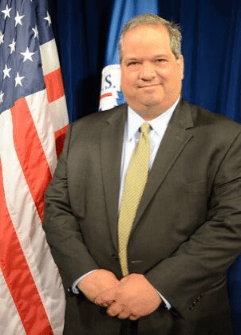Tuesday, October 8, 2019 | 11:00 a.m. to Noon MT
Moving Mitigation Forward: The Past, Present, and Future of Hazard Mitigation Assistance
Webinar Description:
This webinar will take a close look at FEMA’s Building Resilient Infrastructure and Communities (BRIC) program and the next steps for the effort. BRIC, which was recently funded as part of the Disaster Recovery Reform Act of 2018, allows FEMA to set aside six percent of the estimated disaster expenses for each major disaster in order to fund a new pre-disaster mitigation program (and replace the existing Pre-Disaster Mitigation (PDM) program). FEMA is evaluating potential changes in order to transition to BRIC and deliver a program that will (1) more meaningfully reduce risk; (2) reduce disaster costs, and (3) increase resilience across the full spectrum of hazards for the agency’s partners which includes states, local communities, tribes, and territories.
Speaker:
Eric Letvin
Deputy Assistant Administrator for Mitigation, Federal Emergency Management Agency
Natural Hazards Center Overview Slides
Webinar Slides
Webinar Questions

Eric Letvin is the Federal Emergency Management Agency deputy assistant administrator for mitigation. Letvin directs pre- and post-disaster mitigation programs that support sustainable, disaster-resilient communities. These programs include the Hazard Mitigation Grant Program, the Pre-Disaster Mitigation Grant Program, the Flood Mitigation Assistance grants, the Floodplain Management component of the National Flood Insurance Program (NFIP), and the NFIP Community Rating System. In addition, Mr. Letvin leads the hazard mitigation disaster workforce cadre and overall disaster operations for the agency’s Federal Insurance and Mitigation Administration.
Before joining FEMA, Letvin was the director of hazard mitigation and risk reduction policy for the White House National Security Council where he coordinated mitigation capabilities as identified in the National Preparedness Goal and advised the president in the mitigation mission area. He holds a bachelor’s and a master’s in environmental engineering from Syracuse University and a Juris Doctor from the University of Maryland Baltimore.